|
|
|
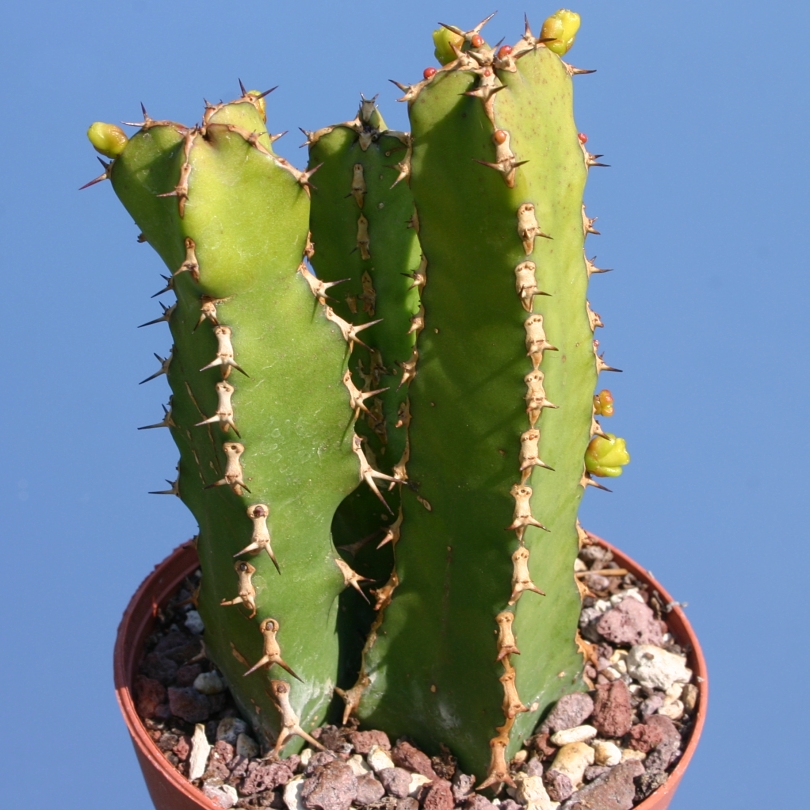
Euphorbia ledienii (pale form)
|
|
Description: E. ledienii
is a succulent shrub freely branching from the base to form a very
cactus-like plant up to 2 m high.
Stems: Branches erect, glabrous, pale yellowish-green, grey green
to dark bluish green (depending on clones), up to 5,5 cm in diameter,
moderately constricted at intervals into oblong irregular joints 7-18 cm
long,
Ribs: (3-)4 to 7 (mostly 4 or 5 ), sharply angled with situated
teeth approx 15-18 mm apart.
Stipular spines: 6- 20 mm long in pairs; elongated, rudimentary,
separate or joined.
Leaves: Small rudimentary , soon leafless.
Inflorescences: Cymes, simple, formed by three cyathia in an horizontal
line, peduncles up to 3 mm.
Cyathia: Up to 5 mm wide Yellow, nectar glands oblong, touching.
Fruit: slightly lobed, up to 7 mm in diameter, peduncle up to 6 m
long.
E. ledienii cristata
is a very beautiful strong green crested plant with intricately
undulating fan-shaped branches.
The E. Ledienii var.
dragei differs from the type for 3-5 flowered cymes and smaller sized
cyathia (up to 4 mm in diameter) Origin Eastern Cape, Port Elizabeth
district, South Africa
|
|
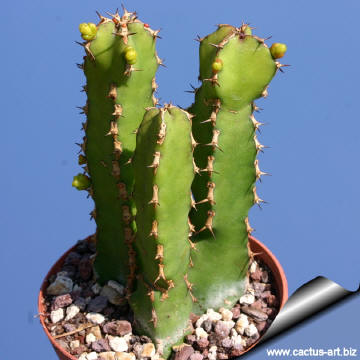
E. lidienii pale form (Standard) |
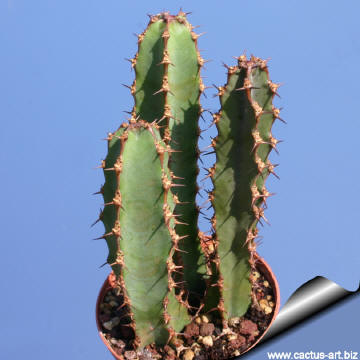
E. lidienii dark form. |
|
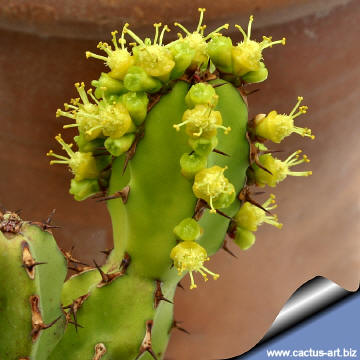 |
 |
|
Warning: As with all other
Euphorbias when a plant get damaged it exudes a thick white milky sap
known as latex. This latex is poisonous and particularly dangerous
for the eyes, skin and mucous membranes. So pay extreme attention not to
get any in your eyes or mouth. Cultivated plants must be handled
carefully. Watt & Breyer-Brandwijk
(1962) described this plant as being virulently poisonous.

 |
|
Advertising
|
|
|
|
|
Family:
Euphorbiaceae
Scientific name:
Euphorbia ledienii
A.Berger
In: Sukk. Euphorb., 80, 1907.
forma cristata
Origin:
Garden
origin (Nursery produced cultivar) The standard E. echinus is endemic to
Eastern Cape, Uitenhage and
neighbouring districts, South Africa
Conservation status: Listed in
CITES appendix 2.
Common Names include: "Crested Euphorbia".
Synonyms:
- Euphorbia ledienii N.E.
Brown
In: Bot. Mag., t. 8275. 1909
|
|
|
|
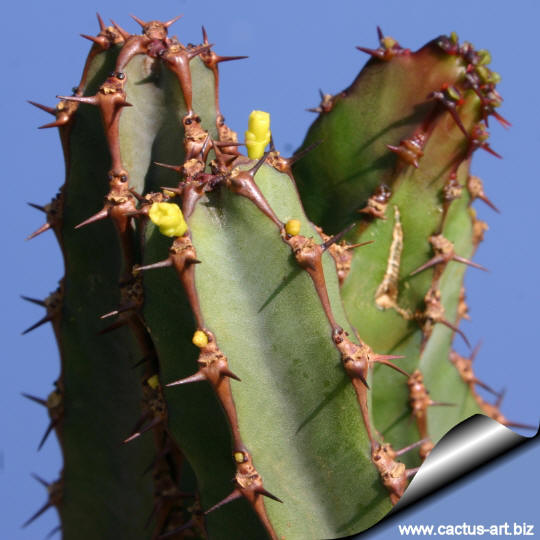
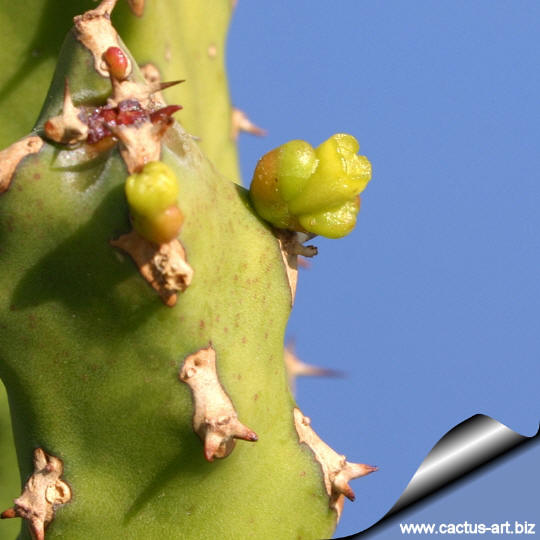
Culture: Need bright light to partial shade for best appearance. It
responds well to warmth, with its active growth period in the late
spring and summer months. Water thoroughly when soil is dry to the touch
during active growing season (more than once a week during hot weather)
In the winter months, waterigs should be suspended or restricted to once
over the winter. The most common failure in growing this plant is over
watering, especially during the winter months. Likes porous
sub-acidic substrata (pH 6)
with adequate drainage. Very tender, protect from frost.
Reproduction: It is
propagated by cuttings. It is recommend taking Euphorbia cuttings in
Spring/Summer when the plant is growing so that they have a better
chance of success. They key is heat & good air circulation. These
cuttings should be dipped in Hormone powder (but it is not needed) and
left for a period of 3-4 weeks to callous. Then pot the cutting and
don't water ( or kept slightly moist) until rooted. These will root just
fine, if you can put the pot outside in the summer, or put pot on a
heating pad.
Photo of conspecific taxa, varieties, forms and
cultivars of Lobivia (Echinopsis) pentlandii .
of plants
belonging to the Lobivia...
complex
(This
Taxon
has lots of synonyms (
like many other cacti) whit
several controversial varieties and subspecies and comprises a
multitude of different forms, but where each form is linked to others by
populations of plants with intermediate characteristics):
|
|